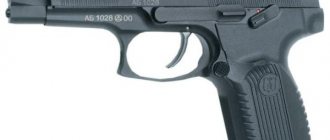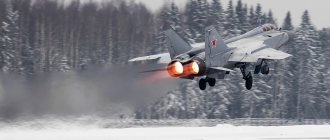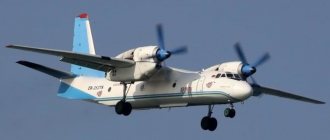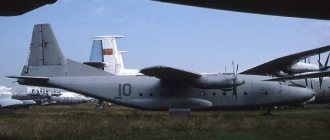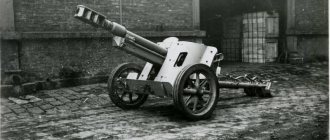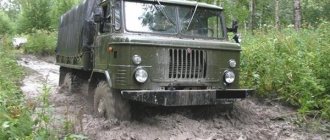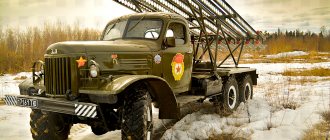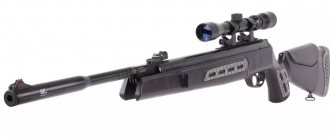Russian light assault vehicles
The article was prepared on the basis of materials provided by the Zashchita Corporation. The adoption of new families of vehicles of the 4x4, 6x6 and 8x8 type - the Ural Motovoz and KamAZ Mustangs - for supply to the Russian army did not at all resolve the issue of a new light all-terrain vehicle to replace the good old UAZs .
Meanwhile, such a vehicle - both as a transport vehicle and as a highly mobile air transportable platform for installing special equipment and some types of weapons - is urgently needed by modern armed forces, and other law enforcement agencies of the state. On the other hand, local military conflicts, counter-terrorism and peacekeeping operations have revived interest in this type of combat vehicle, such as a light armored vehicle on an all-terrain all-terrain chassis.
Since the 1980s. There is a process of returning armored vehicles to the armed forces of various states as patrol and reconnaissance vehicles, light armored personnel carriers, ambulance recovery vehicles, weapons carriers or tractors. Interest in them has especially grown based on the experience of military conflicts in the first decade of the 21st century. Leading countries have launched programs to create multi-purpose military unarmored and armored vehicles of the “light” and “medium” categories (for example, the American JLTV program, the German AMPV).
In recent years, a number of 4x4 vehicles have been introduced in Russia, designed to fill these “niches”. Some of them have passed certain stages of testing in the Armed Forces. Among them are the “light assault vehicle” LSHA and the “light assault vehicle, armored” LSHA-B, developed and presented by the Zashchita Corporation (previously known for its work on armoring special vehicles). Let's take a closer look at these machines as one of the interesting examples of solving the mentioned problems. Moreover, against the backdrop of plans to purchase vehicles for the domestic Armed Forces based entirely on foreign chassis.
Light "assault"
The definition of “light assault vehicle” is an almost literal translation of the English-language Light Strike Vehicle (LSV). It is “assault” (or “strike”, as “strike” can be translated) that includes a number of military vehicles of the “light” and “medium” class of the new generation. The point, apparently, is not only in the “showiness” and catchiness of such definitions. In the range of tasks solved by multi-purpose off-road vehicles, the “combat” component and combat support tasks have noticeably increased.
LSHA vehicle (“Scorpion-2M”) with a removable awning and side mounts
The emergence of LSA is associated precisely with foreign experience. In 2007, the Zashchita Corporation took part in the competition for a heavy armored multi-purpose vehicle for the armed forces of the Republic of India. An armored version of a substantially redesigned UAZ “Bars” car with a three-door body, a diesel engine and right-hand drive was presented - in accordance with the customer’s requirements. At the final stage of the competition, the requirement for independent suspension of the car's wheels was also determined, which caused further design changes. Finally, in 2009, the Indian military announced the need for a “light assault” (strike) vehicle. This prompted the Zashchita Corporation to develop its own chassis.
The prototype of the new vehicle was ready by August 2010. The corporation did not receive an Indian order, but the “light assault vehicle” (LSA) was of interest to representatives of the GABTU of the Russian Ministry of Defense. In September 2010, the first samples were handed over for trial use among the troops. In total, from the fall of 2010 to the summer of 2011, ten conventional and two armored vehicles underwent trial operation (including on the basis of the 45th separate airborne special forces regiment and the 56th separate air assault brigade).
In parallel, laboratory tests were carried out at the Research Testing Center for Research and Prospects for the Development of Automotive Equipment of the 3rd Central Research Institute of the Ministry of Defense of the Russian Federation (formerly the 21st Test Research Institute of the Ministry of Defense) in Bronnitsy near Moscow. Based on the experience of these tests, the tactical and technical requirements for the vehicles were clarified, their design was significantly refined, and in September 2011, the current appearance of the LSHA and LSHA-B actually took shape. These machines also have commercial designations - “Scorpion-2M” and “Scorpion-B”, respectively.
Control panel with built-in telemetric on-board computer TBV-M1
The LSHA stands out somewhat from the usual range of SUVs with its carrying capacity. With rather limited dimensions and a curb weight (including driver) of 2400 kg, its load capacity is increased to 1000 kg. In combination with a well-designed cabin, this allows the light vehicle to transport eight (including the driver) fully equipped soldiers, practically one motorized rifle squad or group, if we are talking about special forces.
The flat floor of the cabin, folding removable seats and wide rear doors facilitate the use of the LSA for transporting the wounded on stretchers, transporting heavy weapons (for example, an 82-mm mortar with crew and ammunition), bulky cargo, as well as adapting the vehicle for the installation of special equipment, a radio equipment complex and so on. It is possible to install automatic weapons, ATGMs, and MANPADS.
As already noted, a ready-made domestic or foreign chassis was not taken for the new car - it was created anew using ready-made or modified units. From the point of view of “localization” of supplies, the chassis is currently “mixed”. Let's say, the Andoria diesel engine is made in Poland (engines manufactured by the engine manufacturer in Andryukhov are generally widely supplied to Russia), the 5-speed gearbox is Korean (a similar gearbox is installed on the UAZ-3159 Bars of the Ulyanovsk Automobile Plant; a lightweight all-terrain " Scorpion-1", presented by the Zashchita Corporation, is made on the basis of the UAZ-3159), the transfer case is similar to that installed on the GAZ-66, the tires are the widespread brand "Cooper Discover" STT, the final drive, suspension units are of our own design, the hydraulics are domestic suppliers, etc.
TOP 5 most dangerous armored vehicles of the Russian army
Armored cars have been known since the First World War. At that time, examples of this military equipment served as infantry support vehicles. Since then, the relevance of armored vehicles has not disappeared, because there are a number of tasks that only they can perform. Let's see what Russia has in this segment of armored vehicles.
"Abaim-Abanat"
An assault defensive and defensive special vehicle with an outlandish name and no less outlandish shape was created on the basis of the GAZ-233034 (SPM-1). The vehicle is equipped with a retractable assault ladder, controlled from the cockpit. It is designed for assault teams to overcome high obstacles and penetrate buildings on the second and third floors. Three armored shields can be installed on the upper platform of the assault ramp for additional protection of fighters.
"Tiger"
The Arzamas Machine-Building Plant produces a multi-purpose all-terrain armored vehicle. The basic model turned out to be so successful that to date, 25(!) types of vehicles for different purposes, with different sets of weapons and different levels of protection are produced on its basis. "Tigers" are used by the military, and in the structures of the Ministry of Internal Affairs, the FSB, the Ministry of Emergency Situations, and in various civilian institutions.
"Cornet-EM"
It was on the basis of the Tiger that the Kornet-EM self-propelled anti-tank missile system was designed. The launcher itself and the missiles for the complex were developed at the Tula Instrument Design Bureau. Laser-guided anti-tank missiles with a cumulative warhead, included in the complex's ammunition load, have a flight range of 10 km and penetrate armor 1100-1300 mm thick.
"Wolf"
The Wolf modular wheeled platform allows you to create vehicles for different purposes on the same base. Unlike the Tiger, this armored vehicle does not have an all-welded body. Depending on the mission, the “Wolf” can turn into an armored personnel carrier, truck, tractor, chassis for ATGMs and air defense systems, a command post or reconnaissance patrol vehicle, or a medical vehicle.
"Bear"
Initially, the VPK-3294 wheeled armored personnel carrier, which received the typically Russian name “Bear,” was developed for the needs of the Internal Troops. However, after the creation of the first prototype, the army also became interested in the machine. The result was a multi-purpose armored wheeled platform with enhanced mine protection. Depending on the configuration, it can be used as an armored personnel carrier, a chassis for mounting ATGMs, mortars and other weapons systems, a protected command and staff vehicle, a reconnaissance patrol vehicle, a medical vehicle, or a convoy escort vehicle.
Currently, the military-industrial complex of our country is able to satisfy any need of the armed forces for armored wheeled vehicles. Attention should be paid to the versatility of the models being developed, which make it possible to create a large number of modifications for different purposes on the same basis.
Follow us on VKontakte, Odnoklassniki
The failure of "Novator"
If you read the Ukrainian media, you get the feeling that the Novator armored vehicle is the best Ukrainian army SUV, which has gained such popularity that every citizen of Ukraine wanted to buy one. But there is one “but”. since 2020 it has produced only one armored vehicle. That's all you need to know about the “irresistible” desire of Ukrainians to purchase a domestic car.
It also produces another armored vehicle, the Varta. Here the situation is a little better: the number of cars produced has exceeded 100 units - an order from the Ministry of Defense of Ukraine.
But that's not all. This one was previously created in the early 2000s by Irina Pinchuk. Before rebranding in 2020, the company specialized in the production of plastic containers and wholesale trade, but in June 2015 it changed its profile and focused on armored vehicles. In addition, in 2018, Ukrainian Armored Vehicles got into a loud scandal, as it was accused of increasing the price of an armored car. The corresponding investigation was carried out by journalist and people's deputy of the Verkhovna Rada Alexander Dubinin.
The new Russian armored car is eager to fight (PHOTO)
At MAKS 2017, BURAN was shown for the first time, a new domestic armored vehicle capable of competing with the famous Tiger.
As one of the developers said, BURAN was built in just four months - they were in a hurry to be in time for the start of the air show. The idea of the armored vehicle, as well as its implementation, belongs to a well-known Nizhny Novgorod company that has been specializing in vehicle armor for many years.
BURAN is a car in the same class as the famous “Tiger”: their overall length differs by only 11 cm and is just under 6 meters. Under the hood, both have a Yaroslavl in-line 4-cylinder diesel engine YaMZ-534, but BURAN uses it in a lower power version: 99.2 versus 158 kW.
Compared to the Tiger, which has been produced since 2005, BURAN has a number of noticeable advantages. Let's start with the fact that it is better protected.
The basic “Tiger-M” has protection class 3, the newest modification “Tiger SBM” has protection class 5. And the BURAN has protection class 6A: even the SVD cannot take it, from any distance and with any cartridge. This largely explains why the total weight of the newcomer is one ton higher: 8.8 versus 7.8 tons.
Another important point: the layout of the BURAN airborne squad provides higher mobility of fighters: each of them has their own door. Apparently, this is why the wheelbase of the BURAN is almost half a meter longer than that of the Tiger. But it was worth it!
In the BURAN version shown at MAKS-2017, in addition to the driver, there are five crew members in its body: the commander is facing forward in the right front seat, and the other four are in pairs along the body with their backs to each other. But you can add four more: for this, instead of the onboard platform located at the rear, a habitable module is installed, where the fighters also sit in pairs, but due to the presence of wheel arches, with their backs to the sides.
Replacing one body module with another will not take much time: BURAN is a transforming car, the body of which consists of four main parts with the ability to quickly install and dismantle. This is the hood along with the fenders, as well as the driver, middle passenger and rear passenger/cargo modules. An additional powerful mine-resistant armor protection for the bottom is installed as a separate module.
Now a few words about the armored vehicle’s transmission. The gearbox and drive axles for it were borrowed from serial off-road trucks produced by GAZ. This is not difficult to understand when you see the gearbox and transfer levers in the floor to the right of the driver's seat.
It turns out that the power line of the BURAN is virtually identical to the Sadko with the Yaroslavl engine, which will certainly have a positive effect on its cost.
Another thing is that because of the above, BURAN, instead of an independent suspension like the Tiger, received a fully dependent suspension using springs. This, of course, is not very great from the point of view of mobility in off-road conditions (whoever doubts it can first drive over rough terrain in the Ural, and then in the Tatra: the difference is more than noticeable!).
In addition, due to the protruding axle housings, the BURAN has less ground clearance: 340 mm, while the Tiger has exactly 400 mm.
But, on the other hand, BURAN has 90 mm higher clearance under the bottom (490 mm). And the approach and departure angles are much steeper than those of the Tiger: 43 and 50 versus 34 and 36 degrees. BURAN is ahead in terms of power reserve: the amount of fuel in two 105-liter tanks allows you to cover not 1000, but 1400 km at one gas station.
Specifications
| Sedan | Station wagon | |
| Vehicle length | 5.1 m | 5.35 m |
| Width | 2.1 m | 2.1 m |
| Height | 1.83 m | 2.1 m |
| Wheelbase | 3.34 m | 3.5 m |
| Clearance | 0.315 m | 0,315 |
| Curb weight | 4.35 tons | 5.1 tons |
| Load capacity | Normal – 600 kg, maximum – 850 kg | 850 kg |
| Speed | Up to 180 km/h | Up to 180 km/h |
The manufacturer's declared fuel consumption per 100 kilometers for both versions of the car is 15 liters in the city cycle and 12 liters on the highway (for a gasoline engine). Acceleration to 100 km/h should be accomplished in 9-10 seconds.
